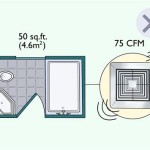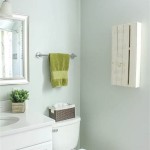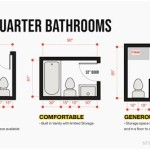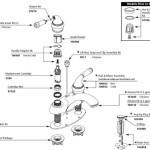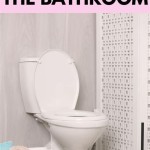Bathroom Stick On Floor Tiles: A Practical and Stylish Flooring Solution
Bathroom renovations, whether extensive overhauls or minor updates, often involve careful consideration of flooring options. Among these options, stick-on floor tiles have emerged as a popular choice, particularly for homeowners seeking a cost-effective, DIY-friendly, and aesthetically versatile alternative to traditional tiling methods. These tiles, also known as self-adhesive or peel-and-stick tiles, offer a compelling blend of convenience, affordability, and style, making them a suitable option for various bathroom remodeling projects. This article explores the characteristics, advantages, installation process, and maintenance requirements associated with bathroom stick-on floor tiles, providing a comprehensive overview for individuals considering this flooring solution.
Stick-on floor tiles are typically constructed from vinyl or other synthetic materials. The core composition provides durability and resistance to water damage, a crucial factor for bathroom applications. A decorative layer, often mimicking the appearance of natural stone, ceramic, or wood, is applied to the surface, providing a wide range of aesthetic choices. The defining feature of these tiles is the adhesive backing, which allows for direct application to a prepared subfloor without the need for mortar or grout. This self-adhesive characteristic significantly simplifies the installation process, reducing both time and labor costs.
Understanding the Key Advantages of Stick-On Floor Tiles for Bathrooms
The allure of stick-on floor tiles stems from a number of distinct advantages, making them a compelling option for bathroom flooring. These benefits extend beyond mere aesthetics and encompass practical considerations such as cost, ease of installation, and maintenance.
Cost-Effectiveness: Stick-on floor tiles are generally less expensive than traditional ceramic or porcelain tiles. This affordability extends beyond the material cost, as the simplified installation process reduces the need for professional labor. The lower initial investment makes stick-on tiles an attractive option for budget-conscious homeowners looking to upgrade their bathroom flooring without incurring significant expenses.
DIY-Friendly Installation: The self-adhesive backing of these tiles eliminates the need for specialized tools or extensive experience in tiling. Homeowners can typically install stick-on floor tiles themselves, following basic instructions and utilizing readily available tools such as a utility knife, measuring tape, and straightedge. This DIY-friendliness translates into significant cost savings and allows homeowners to control the pace and execution of the installation process.
Water Resistance: Bathrooms are inherently prone to moisture exposure, making water resistance a critical characteristic of any flooring material. Many stick-on floor tiles are specifically designed to withstand moisture, preventing water damage and mold growth. While not entirely waterproof, these tiles offer a sufficient level of protection for typical bathroom environments, provided spills are promptly addressed and proper ventilation is maintained.
Variety of Styles and Designs: Stick-on floor tiles are available in a vast array of styles, colors, and patterns, mimicking the appearance of natural stone, wood, and ceramic tiles. This extensive selection allows homeowners to achieve a desired aesthetic without the higher cost associated with premium materials. Whether seeking a contemporary, traditional, or rustic look, stick-on tiles offer a versatile solution for matching various bathroom design schemes.
Ease of Maintenance: Maintaining stick-on floor tiles is generally straightforward, requiring only routine cleaning with mild soap and water. The smooth, non-porous surface of these tiles resists staining and simplifies the removal of spills and dirt. Regular sweeping or vacuuming can also help prevent the accumulation of debris and maintain the tiles' aesthetic appeal. Specialized cleaning products designed for vinyl flooring can be used for more stubborn stains or to enhance the tiles' shine.
Preparing the Subfloor for Optimal Stick-On Tile Adhesion
The success of any stick-on floor tile installation hinges on proper subfloor preparation. A clean, level, and sound subfloor is essential for ensuring optimal adhesion and preventing premature tile failure. Neglecting this critical step can lead to issues such as tile lifting, cracking, and uneven surfaces. The following steps outline the key considerations for preparing the subfloor prior to installing stick-on floor tiles:
Cleaning the Subfloor: Begin by thoroughly cleaning the subfloor to remove any dust, dirt, grease, or debris. Use a vacuum cleaner to remove loose particles, followed by a damp mop with a mild cleaning solution to address any remaining residue. Allow the subfloor to dry completely before proceeding to the next step. Avoid using harsh chemicals or abrasive cleaners, as these can damage the subfloor or interfere with the tile's adhesive.
Leveling the Subfloor: Unevenness in the subfloor can compromise the adhesion and appearance of stick-on floor tiles. Identify and address any uneven areas, such as dips or bumps, using a self-leveling compound. Follow the manufacturer's instructions for applying the compound, allowing it to dry and cure completely before proceeding.
Repairing Subfloor Damage: Inspect the subfloor for any signs of damage, such as cracks, holes, or loose boards. Repair any damage using appropriate materials, such as patching compound for cracks or replacement boards for damaged sections. Ensure that all repairs are flush with the surrounding subfloor surface.
Priming the Subfloor (Optional): In some cases, applying a primer to the subfloor can improve the adhesion of stick-on floor tiles. This is particularly recommended for porous subfloors or those with existing adhesive residue. Choose a primer specifically designed for vinyl flooring and follow the manufacturer's instructions for application. Allow the primer to dry completely before installing the tiles.
Acclimation: Allow the stick-on floor tiles to acclimate to the bathroom's temperature and humidity for at least 48 hours before installation. This acclimation period helps the tiles adjust to the environment, minimizing the risk of expansion or contraction after installation. Store the tiles in the bathroom, laying them flat and ensuring adequate air circulation.
Installation Techniques for Achieving a Professional Finish
While stick-on floor tiles are generally easy to install, employing proper techniques can significantly improve the appearance and longevity of the finished floor. Careful planning, precise measurements, and attention to detail are essential for achieving a professional-looking result. The following guidelines outline the key steps involved in installing stick-on floor tiles:
Planning the Layout: Before beginning the installation, plan the layout of the tiles to ensure a balanced and aesthetically pleasing design. Consider the placement of full tiles along the perimeter of the room and plan for any necessary cuts around obstacles such as toilets, sinks, and doorways. Use a measuring tape and straightedge to mark the layout on the subfloor.
Applying the Tiles: Peel off the protective backing from the first tile and carefully position it on the subfloor, aligning it with the marked layout lines. Press the tile firmly onto the subfloor, starting from the center and working outwards to eliminate any air bubbles. Repeat this process for each subsequent tile, ensuring that they are tightly butted together without any gaps.
Cutting Tiles: Use a utility knife and straightedge to cut tiles to fit around obstacles or along the edges of the room. Score the tile surface firmly along the cut line, then gently snap the tile along the score. For more intricate cuts, use a jigsaw or other suitable cutting tool.
Rolling the Floor: After installing all the tiles, use a floor roller to ensure proper adhesion. Roll the entire floor surface, applying even pressure to each tile. This helps to eliminate any remaining air bubbles and ensures a strong bond between the tiles and the subfloor.
Sealing the Edges (Optional): To provide additional protection against moisture, consider sealing the edges of the floor with a waterproof sealant. This is particularly recommended in areas that are frequently exposed to water, such as around the toilet and shower.
Allowing Time to Set: Allow the adhesive to fully set according to the manufacturer's instructions before subjecting the floor to heavy traffic or moisture. This typically takes at least 24-48 hours.
While bathroom stick-on floor tiles offer a practical and aesthetically pleasing flooring solution, it is essential to acknowledge the limitations associated with this material. The durability and longevity of stick-on tiles are generally lower compared to traditional tile options such as ceramic or porcelain. In high-traffic areas or bathrooms subjected to excessive moisture, the adhesive may weaken over time, leading to tile lifting or damage. Furthermore, the resale value of a home may not be significantly enhanced by stick-on tile flooring compared to more premium materials. Therefore, homeowners should carefully weigh the pros and cons of stick-on tiles in relation to their specific needs and budget before making a final decision.

Achim Retro 12 In W X L Octagon Charcoal Marble Water Resistant And Stick Vinyl Tile Flooring 20 Sq Ft Case Rtftv61120

Style Selections Castaway 18 In X Groutable Water Resistant L And Stick Luxury Vinyl Tile 2 25 Sq Ft

Veelike 12 Pieces Grey L And Stick Floor Tile For Bathroom X12 Concrete Vinyl Waterproof Self Adhesive Flooring

Vinyl Floor Tiles Stick On Luxury Tile Bathroom Kitchen

Lxcreat L And Stick Floor Tile 35in X 6in Grey Wood Grain Self Adhesive Waterproof For Transfer Kitchen Living Room 10 Pcs

Floorpops Take Home Sample Kikko White 6 In W X L Residential Vinyl Tile Flooring Fp2481sam The

Floorpops Grey And White Gray Patterned Look 2 75 Mil X 12 In W L Water Resistant Stick Vinyl Tile Flooring 20 Sq Ft Carton Tfp2953 At Com

Altair L And Stick Floor Tiles D Marie Interiors

Brown Retro Geometric Pattern L And Stick Vinyl Floor Tile Sticker Commomy

L And Stick Dynamic Star Tiles Stickers Kitchen Bathroom Wall Backsplash Tile Decals Antiskid Floor
